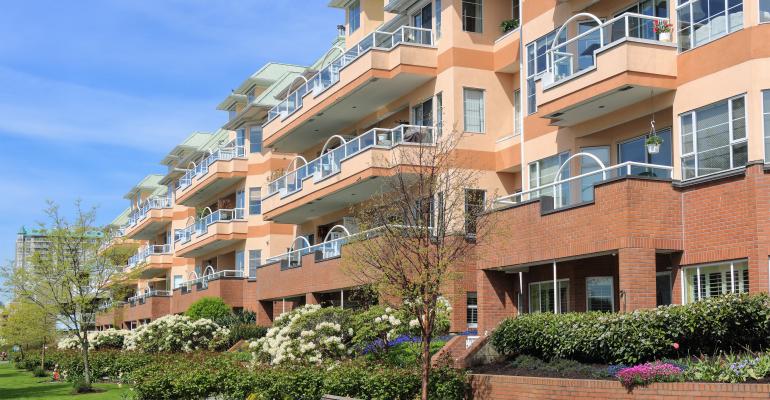Apartment rentals have been luring residents away from other kinds of housing since the housing crash—and that is not likely to change in the foreseeable future.
“Apartments should continue to play a role in the total housing market that goes beyond the historical norm,” says Greg Willett, chief economist for Real Page Inc., a property management software and services provider based in Richardson, Texas.
In the years after the Great Recession, millions of people lost homes to foreclosure and had to move, often into apartments. The extra demand for units was not expected to last more than a few years. However, today—more than a decade after the collapse of Lehman Brothers—the percentage of American households that own their own home is still near its low point. New households are still much more likely to chose to live in rental housing than in the years before the crash.
Preferences shift towards apartments
The U.S. economy has been adding jobs for nearly a decade and is now close to full employment. But households are still much more likely to chose rental apartments than before the crash. The factors driving this decision are not likely to change quickly.
In the second quarter of 2018, the share of households that owned their own home was 64.3 percent, according to the U.S. Census. That’s barely improved from its low point of 63.4 percent in 2015, and far from its high of 69.0 percent in 2004. “Every major age cohort the Census tracks is owning at rates below what we saw from the mid-1990s to 2000s,” says Justin Tochtermann, senior consultant with research firm the CoStar Group.
Even the youngest potential homebuyers—the members of Generation Z—are not buying houses the way people their age have in previous decades. Among people under 25 years old, just 22.6 percent owned their housing in 2017, compared to 25.7 percent in 2005. These youngest households were not scarred by the Great Recession and entered adulthood amid a growing job market and a healing economy.
“Lifestyle preferences have shifted towards renting,” says Tochtermann. Young people are waiting longer before they form their own households, as well as before they marry and start families, he notes.
Young people today also prefer to live close to where they work, in neighborhoods that are more active than the bedroom communities that were acceptable to prior generations, according to numerous surveys. “The far-flung suburbs with the most affordable housing options don’t offer the lifestyles that many young adults prefer,” says Willett. In addition, in many metropolitan areas, more desirable neighborhoods are already built out, with little room for new single-family development.
Economic factors have also made it more difficult for people who want to own their own homes to buy a house or condominium. For most of the last decade, average wages have not grown as quickly as the cost of housing, both for rental apartments and for for-sale product. “That means it’s been tough for young adults to save for purchase down payments, reflecting the share of income needed to cover rent, as well as meaningful debt burdens for some young adults who financed their educations via student loans,” says Willett.
Lots of new apartments amid an overall housing shortage
As a result of these shifting preferences, apartment rentals are becoming a bigger part of the housing market than they used to be. In 2018 and 2019, more than a quarter (27 percent, on average) of the new dwelling units completed by developers will be apartments, including both luxury and affordable units. A dozen years ago, in 2004, 2005 and 2006, fewer than one-in-ten (9 percent, on average) of the new dwelling units completed by housing developers were apartments, according to analysis by brokerage firm Marcus & Millichap.
Developers are opening a lot of new, luxury apartments—300,000 to 325,000 a year since late 2016—and they are likely to keep that frantic pace through the end of 2019, according to RealPage. That’s significantly faster than the rate at which developers built new apartments over the last few decades.
But, overall, builders are creating fewer units of new housing—just 1.2 million a year are anticipated for 2018 and 2019. That’s down a third from 1.8 million a year in 2005, 2006 and 2007. It’s also fewer than the 1.3 million new households anticipated to be formed in 2018 and 2019.
“It’s difficult for developers to build large numbers of starter homes like they did in the past,” says John Sebree, director of the national multi housing group in the Chicago office of Marcus & Millichap.
To fill the demand for rental housing, apartment developers are building far more new buildings than they have in the past, but their activity is not enough to make up for the shrinking number of houses built by single-family homebuilders.
“We are not delivering as many new units as we have in the past compared to household growth,” says Sebree. “Even though we are building a lot of new dwelling units, we are not keeping up with that demand.”

